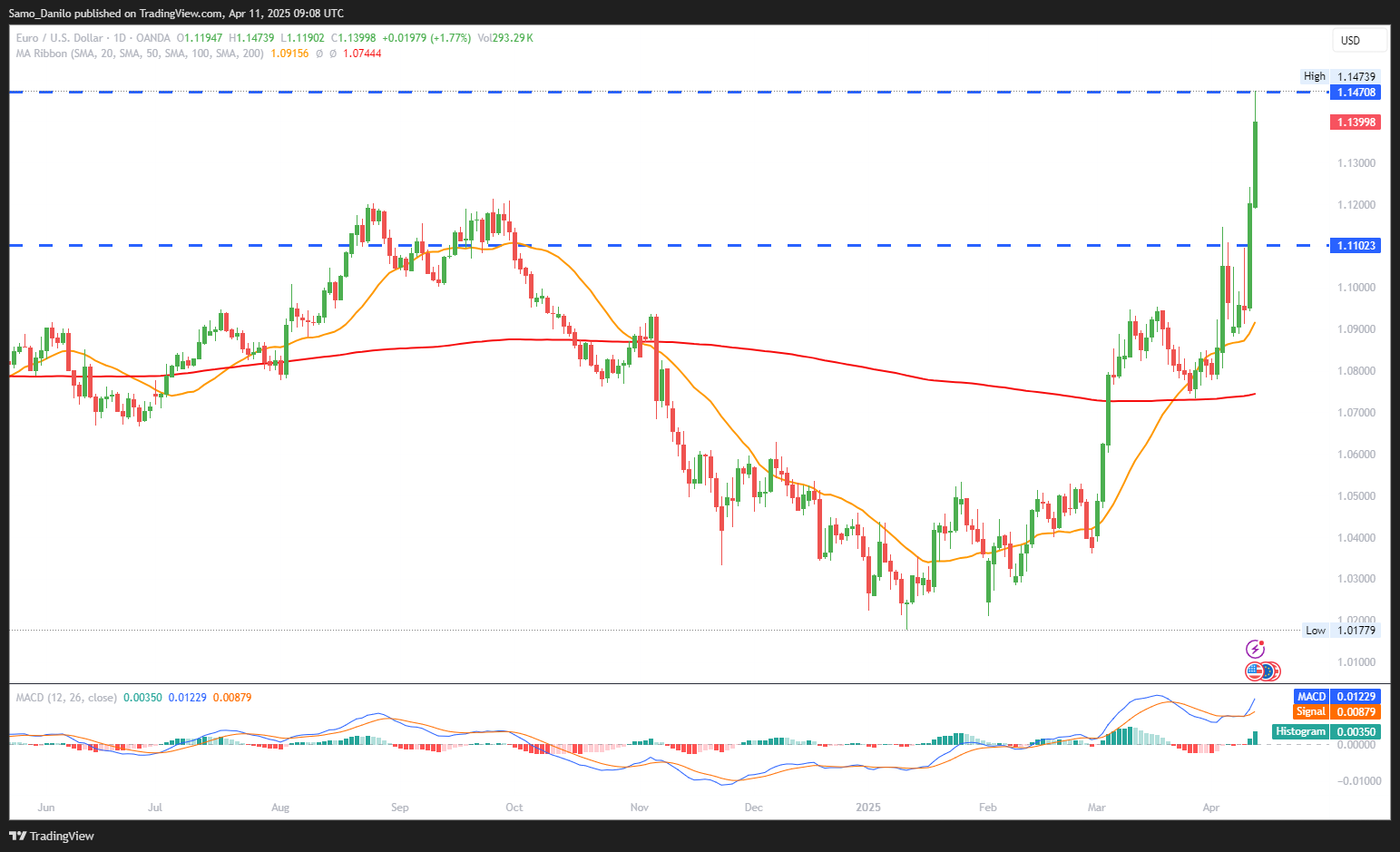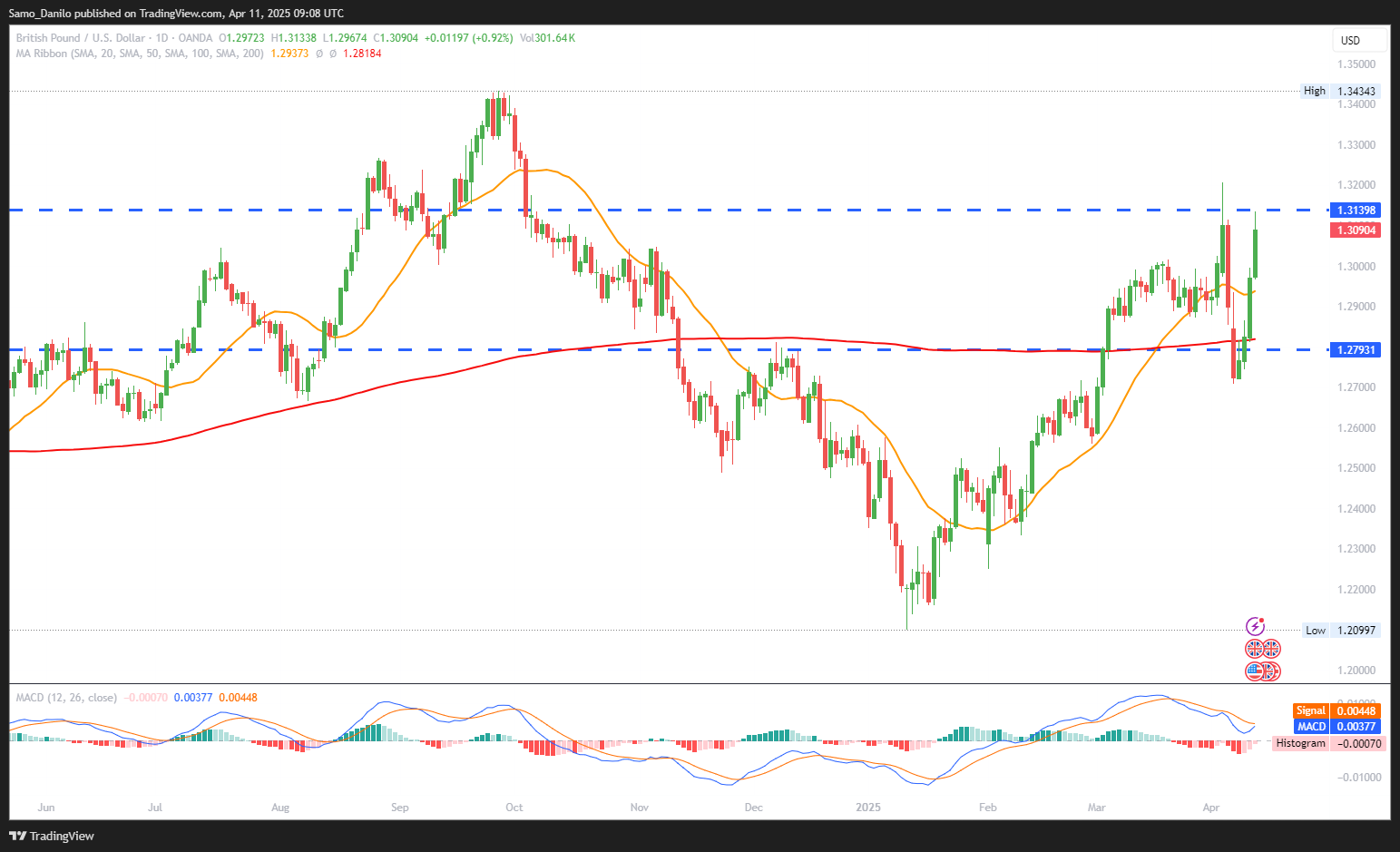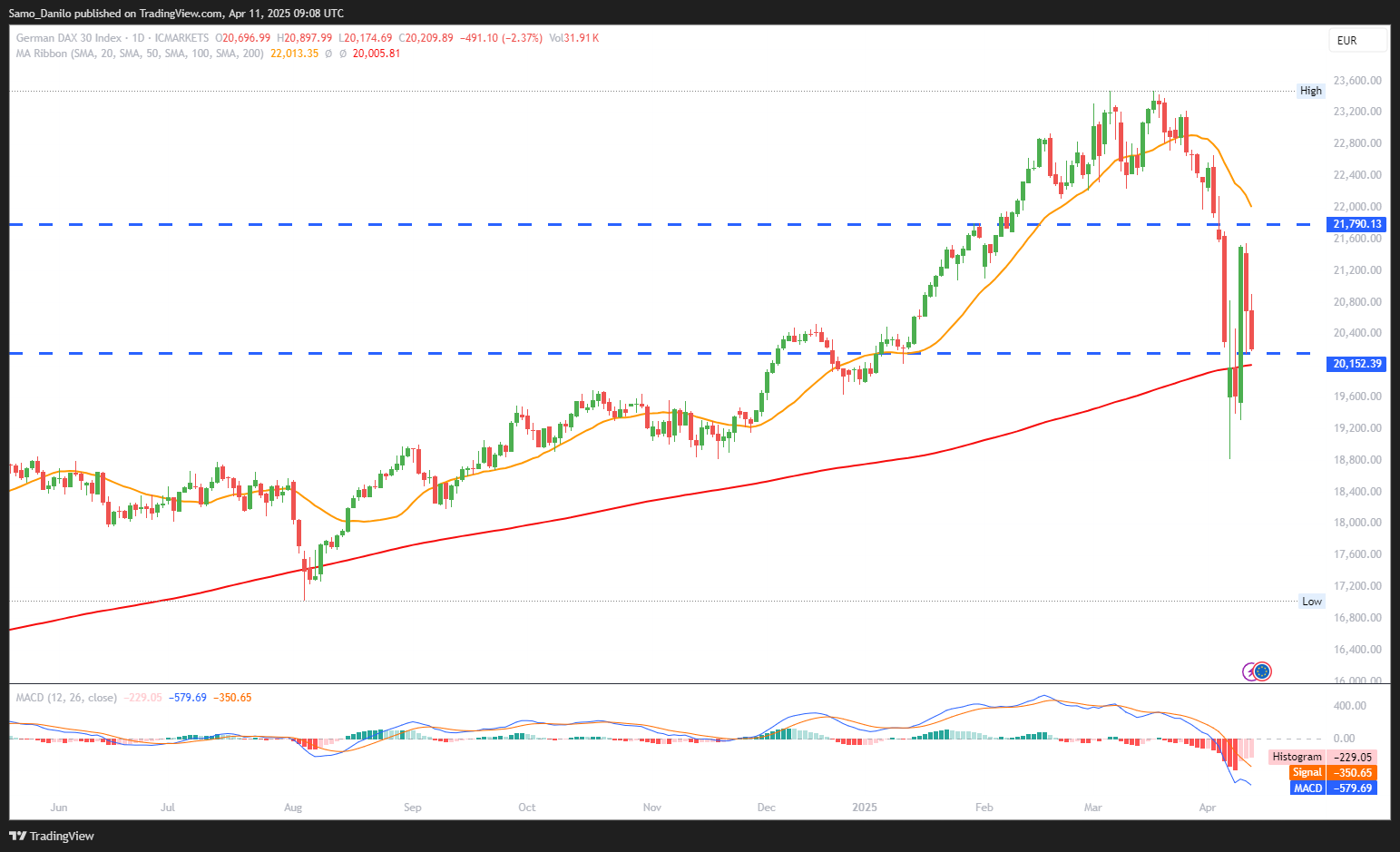EURUSD
- EUR/USD Price: The EUR/USD pair continues to rise for the second straight day, climbing toward 1.1350 during Friday’s European session. The rally reflects improved sentiment surrounding transatlantic trade relations, as well as a softening US Dollar on the back of inflation data.
- Tariff Pause: The Euro gained momentum after the EU announced a 90-day pause on imposing new 25% tariffs on US goods, signaling a move toward trade diplomacy and encouraging hopes of a broader de-escalation in trade tensions.
- ECB Rate Cut: Traders recalibrated their ECB rate cut outlook, now pricing in a 1.8% deposit facility rate by December, up from earlier week expectations. This signals a more cautious ECB stance as policymakers balance growth support with inflation concerns.
- US CPI Print: US headline CPI eased to 2.4% y/y in March, below expectations and February’s 2.8%, increasing the likelihood that the Fed may delay or reduce the scale of any future hikes—supporting a weaker dollar environment.
- Upcoming Data: Market attention is now turning to the March Producer Price Index (PPI) and Michigan Consumer Sentiment figures due later Friday. These releases could influence short-term volatility and further shape the monetary policy outlook on both sides of the Atlantic.
Closing statement: EUR/USD is benefiting from a positive trade backdrop and cooling US inflation, though upcoming data releases may test the pair's recent gains. Continued progress on EU-US trade talks and Fed policy signals will be pivotal in sustaining upward momentum.
GBPUSD
- GBP/USD Price: The GBP/USD pair is consolidating gains around 1.3000 during Friday’s early European session, supported by broad-based US Dollar weakness following soft US inflation data. Despite paring back slightly, the pair remains firm.
- US DXY: The US Dollar Index (DXY) slipped further after a surprise drop in March CPI, leading investors to scale back expectations for aggressive Fed policy. This shift provides continued tailwinds for the British Pound.
- UK GDP: February’s UK GDP growth of 0.5% (vs. 0.0% in January) reflects a positive turn in economic activity, helping bolster investor confidence in the UK outlook. The data reinforces near-term strength in the Pound.
- UK Data: UK Industrial Production rose 1.5% and Manufacturing Output surged 2.2% in February, both exceeding forecasts. These upbeat figures offer additional support to the GBP, signaling resilience in key sectors.
- BoE Rate Cuts: Markets are now aligning with the BoE’s guidance for three 25 bps cuts in 2025, likely in May, August, and November. The prospect of measured easing contrasts with the Fed’s more cautious tone, offering a modestly bullish backdrop for GBP.
Closing statement: GBP/USD is buoyed by stronger UK data and a weaker US Dollar, with sentiment supported by a clear roadmap for BoE easing. Short-term direction may hinge on US macro releases, but the pair maintains a constructive tone near 1.3000.
XAUUSD
- XAU/USD Price: Gold (XAU/USD) is pulling back from fresh all-time highs of $3,220, trading slightly lower in early European hours Friday. Despite the correction, the bullish momentum remains intact, supported by safe-haven demand.
- Technical Indicators: Technical analysis shows the 14-day RSI hovering near 70, the threshold of overbought territory. While this may suggest potential for a breather, it also signals that upward momentum is not yet exhausted, leaving room for fresh highs
- Fed Independence: A legal decision from the US Supreme Court temporarily allows the Trump Administration to fire members of independent agencies, raising fears that Fed Chair Jerome Powell could be dismissed. This would undermine the central bank's credibility and shake financial market stability, fueling demand for gold.
- Trade War: US recession risks are intensifying as President Trump’s administration escalates tariffs on Chinese goods to 145%, the White House confirmed. This heightened geopolitical tension increases the likelihood of aggressive Fed rate cuts, potentially starting in May, and lifts gold’s safe-haven demand.
- Upcoming Data: Later today, investors will watch the Producer Price Index (PPI) and University of Michigan (UoM) inflation expectations for further clues on inflation trends and Fed policy direction. These releases could fuel short-term volatility in gold prices.
Closing statement: Gold remains technically strong and fundamentally supported despite a pullback from record highs. With geopolitical instability, potential Fed interference, and recession fears driving demand, XAU/USD continues to enjoy broad upside potential, especially if upcoming data reinforces a dovish Fed pivot.
CRUDE OIL
- Crude Oil Price: West Texas Intermediate (WTI) crude oil is trading around $60.00 per barrel, extending its decline for the second consecutive day during Friday’s European session. The drop reflects mounting concerns over global demand amid escalating trade tensions.
- Trade War: The prolonged US-China trade conflict is casting a long shadow over the global economy. Fears of slowing trade, disrupted supply chains, and reduced industrial activity are weighing on the demand outlook for oil, especially in China and the US — the two largest energy consumers.
- EIA Forecast: The US Energy Information Administration (EIA) revised down both global GDP and oil demand projections, citing the dampening effects of tariffs. The report highlighted that sustained trade hostilities could have a notably bearish impact on oil prices.
- Fresh US Sanctions: In a surprise move, the Trump administration imposed sanctions on Iranian oil networks, including a storage facility in China. This development complicates upcoming US-Iran talks, adding a layer of geopolitical risk that could counterbalance demand-side weakness.
- Supply Concerns: The Keystone pipeline remains offline after a spill in North Dakota, with no firm timeline for a restart. This ongoing disruption adds short-term supply risk, but hasn’t been enough to lift prices amid overwhelming demand worries.
Closing statement: Crude oil is currently caught between weakening global demand and mounting geopolitical supply risks. Until trade tensions ease or significant supply disruptions occur, the bias remains tilted to the downside, with $60.00 acting as a psychological support level in the near term.
DAX
- DAX Price: The DAX surged 4.53% on Thursday to close at 20,563, recovering from Wednesday’s 3% loss. The sharp rally followed President Trump’s 90-day suspension of reciprocal tariffs, which calmed market fears of an escalating US-EU trade conflict.
- Inflation Data: Germany’s March final CPI came in at +2.2% year-over-year, matching the preliminary estimate. The stable inflation figure supports the view that the ECB can remain patient in adjusting its monetary policy amid global economic uncertainty.
- ECB's Remarks: ECB policymaker François Villeroy de Galhau criticized Trump’s economic and financial policies, stating they are on the "wrong path." His remarks reflect growing European frustration with the unpredictable US trade stance and its economic spillovers.
- Chinese President: Chinese President Xi Jinping, after talks with Spanish PM Pedro Sánchez, stressed that there are no winners in a tariffs war, calling for stronger China-Europe cooperation and commitment to open trade. This adds a layer of geopolitical support for European markets seeking trade stability.
- Corporate Updates: While second- and third-tier companies dominated Friday’s corporate news, Gerresheimer reported strong Q1 growth, aided by its acquisition of Italy’s Bormioli Pharma. The upbeat report provided a positive signal from the industrial segment, reinforcing investor optimism.
Closing statement: The DAX's strong recovery signals renewed investor confidence following the temporary suspension of trade hostilities. However, underlying geopolitical risks and economic headwinds remain, suggesting that volatility may persist in the short term.




